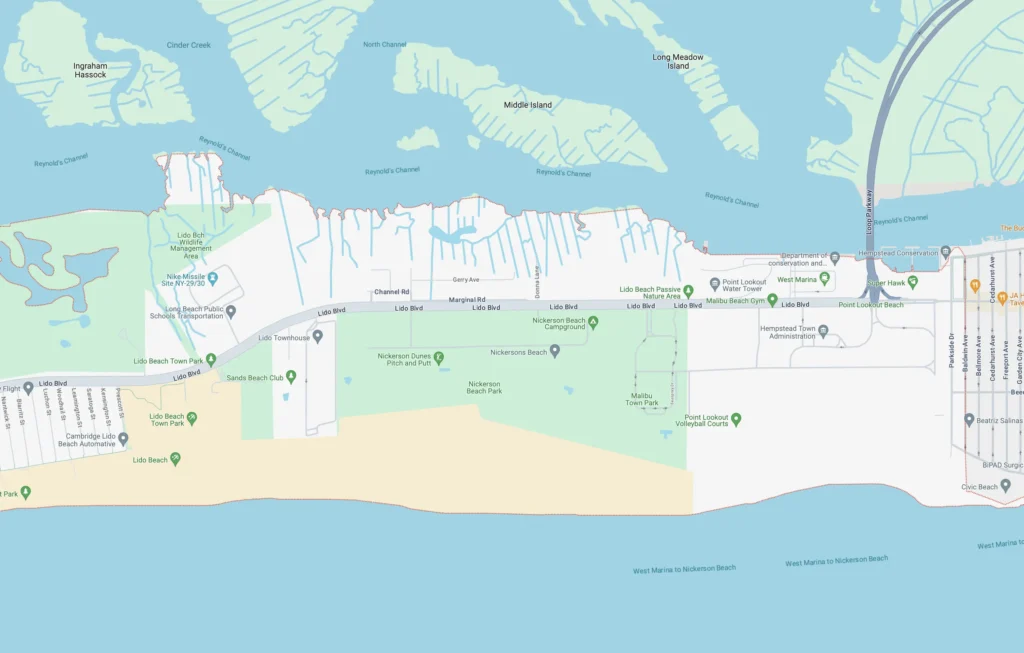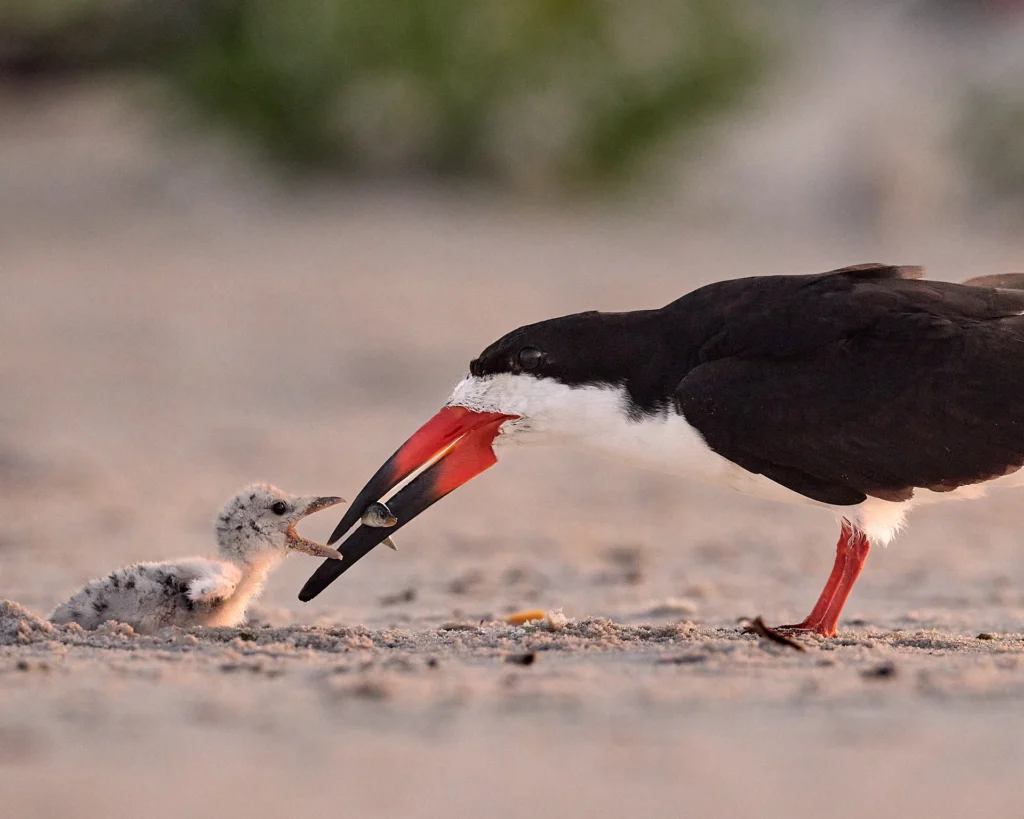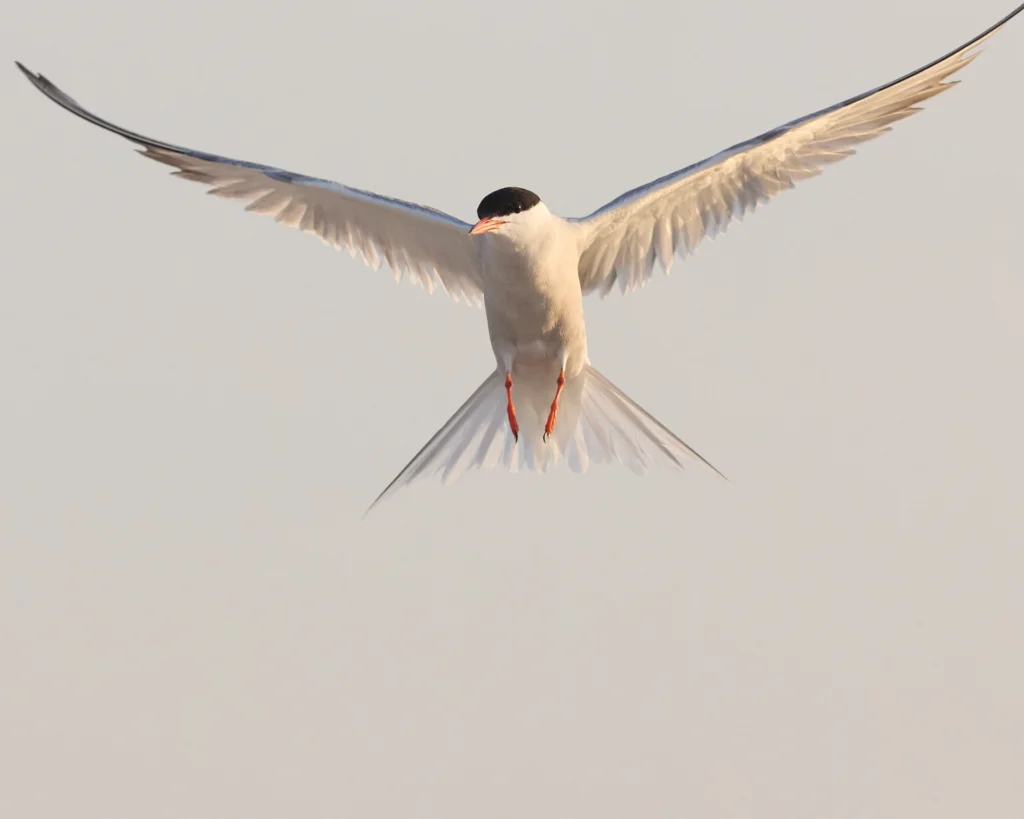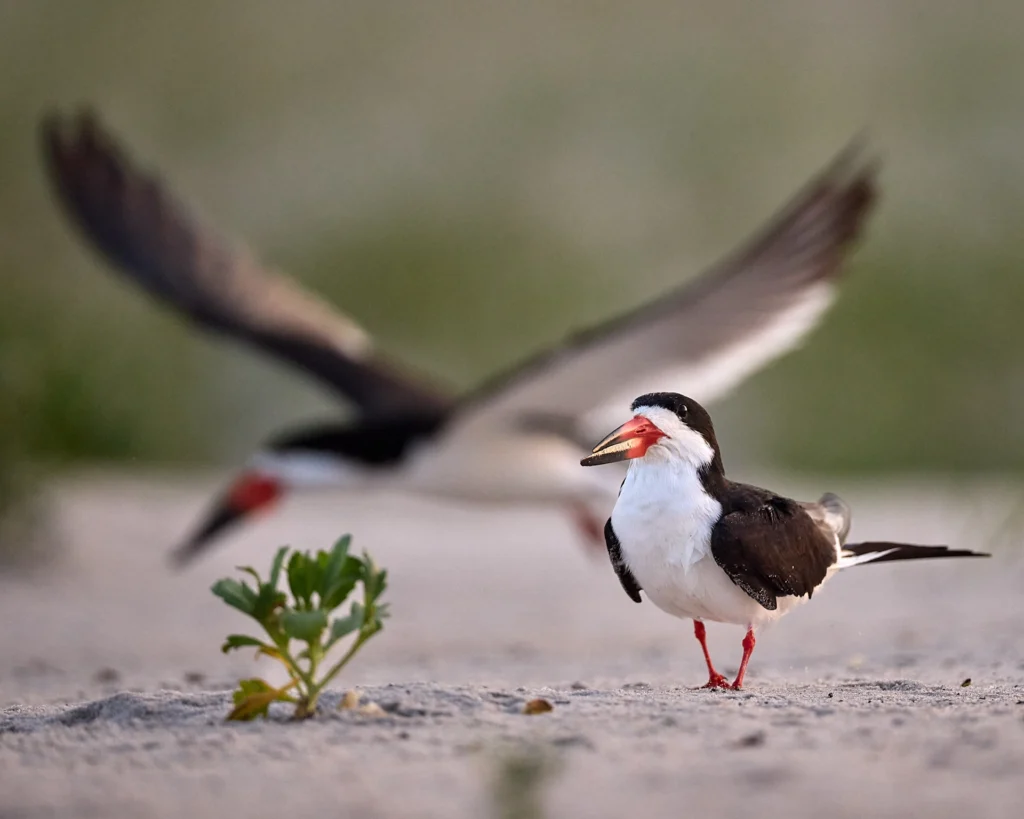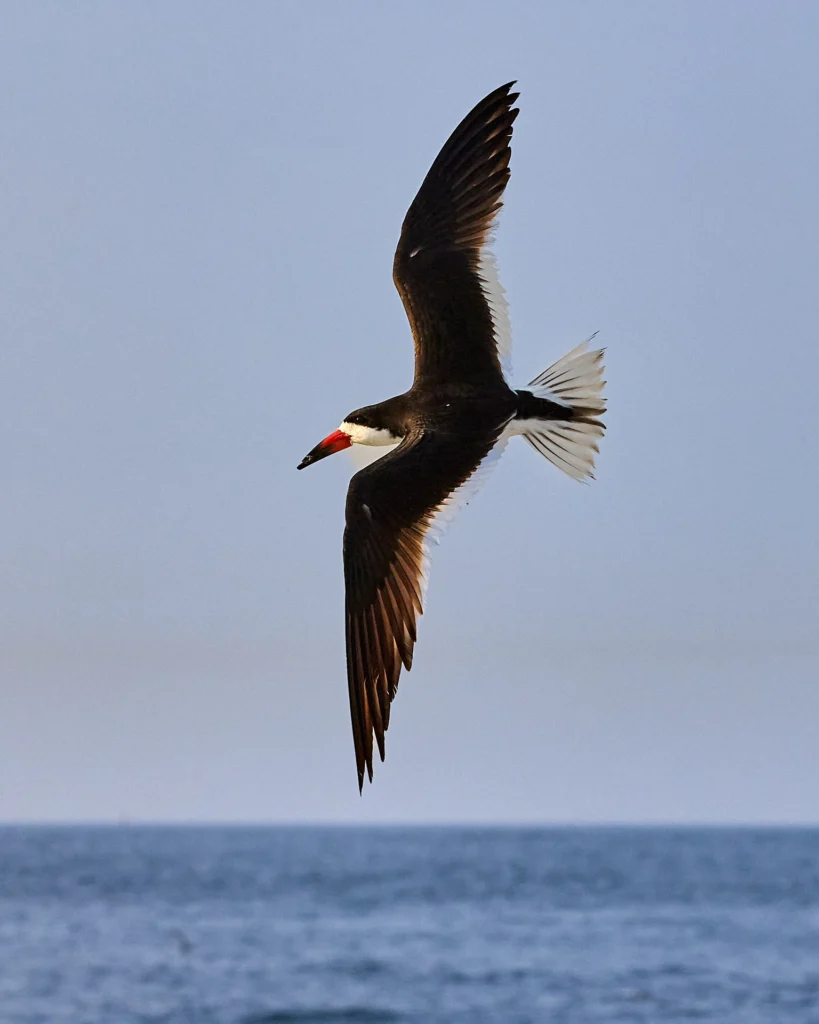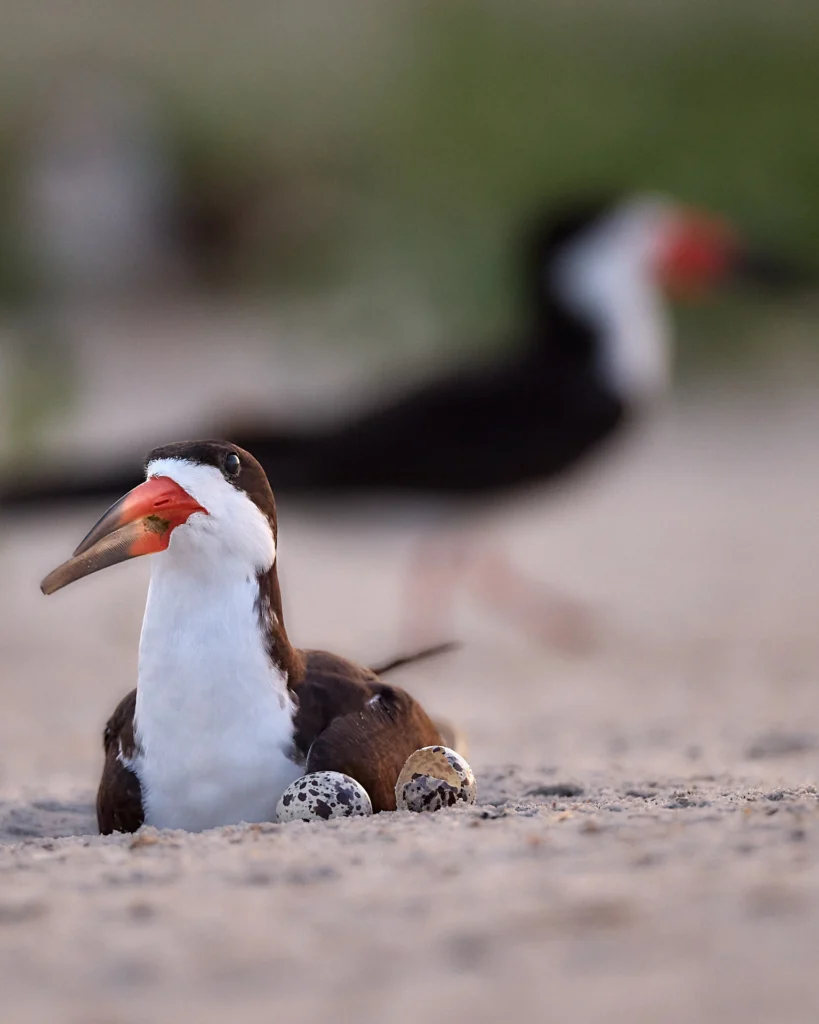How to photograph nesting Black Skimmers and Common Terns
One of the most prolific locations to photograph nesting shorebirds in the United States is Nickerson Beach on Long Island, a few hours from my home in NY. Considering the drive and the desire to photograph in early morning light, my wife and I decided to spend the night there, taking advantage of an excellent local seafood restaurant.
This blog post will provide you with inside knowledge and gear suggestions to take your bird photography to the next level. You’ll be able to capture fantastic images of large breeding colonies of Black Skimmers and Common Terns. In this location, these beautiful birds engage in all kinds of activities, including courtship, breeding, in-flight, feeding of chicks, and other behaviors that will reward you with bird photography worthy of sharing.
Where is Nickerson beach?
Nickerson Beach is located in the town of Lido Beach, Long Island. It’s about a 45 minute drive from New York’s JFK airport on the small island that includes Atlantic Beach and Long Beach. You can get directions on Google Maps, using this address: 880 Lido Blvd, Lido Beach, NY 11561 Lido Beach
When is the best time of year to photograph at Nickerson beach?
I can only speak to the Black Skimmers and Common Terns, the two species I photographed in mid-July. Every year is different depending on weather and other factors. Common Terns mate in May and the first chicks hatch in late June. Black Skimmers are a month behind with mating in June and chicks hatching in mid-July. In 2024, we were there on July 16th. NY had experience a brutal heat wave and the ambient temperature at 5:30 am was about 72 degrees. There was a mix of chicks and some birds still nesting eggs.
Practice ethical bird photography
Before we get into where and how to photograph these beautiful birds, you must agree to adhere to ethical standards that are universal to wildlife photography. Treat the bird environment with respect. These are sensitive breeding grounds, and you must maintain distance. Keep your voices low to minimize the impact you have by your presence. The Black Skimmers are listed as a Species of Special Concern in New York State. There are a limited number of successful and stable breeding colonies. There are roped boundaries that may not be crossed.
I recommend keeping at least 10-20 feet away from the roped areas.
If you stay farther away from the birds, they’ll reward you with fantastic behavioral opportunities.
Get too close, and the birds, particularly the terns, will attack you in a manner reminiscent of Alfred Hitchcock’s “The Birds.”
What time of day is best?
Arrive early. The birds are more active and the temperatures are cooler. Sunrise is around 5:30 am in the summer. I recommend arriving about 20-30 minutes before sunrise to get oriented, and organize gear. Sunset is also a good option if you are not inclined to get up early.
If you arrive at sunrise, you can avoid paying the beach parking fee. Simply keep to the right at the toll collection booths and park over by the main building on the left that houses the restrooms.
Where do I find the colonies?
There are two colonies oriented East and West along the beach. They are well-marked with roped-off areas. DO NOT CROSS.
I spent my time focusing on the West colony allowing me to observe and photograph before the sun got too high at around 7:30 a.m. You can stay longer. However, the light becomes a little harsher. Unless you like NY heat waves, your energy evaporates with each minute.
To find the colonies, walk out to the beach. The first hundred yards are covered with blue matting that makes walking easy. After that, it’s sand. Once you pass the low dunes, turn right for the West colony and left for the East Colony. It’s about ¼ of a mile in sand to reach either of the colonies. The sunrise is about 10 or 15 degrees to the right of both colonies, creating front, side, and back light opportunities as you position yourself for shots.
What to Wear
I recommend long pants, a UV-protected long-sleeve shirt, and a hat. Remember, you’ll be slogging ¼ miles or more in heavy sand. Water and sunscreen are also recommended.
Pro Tip: A wide-brimmed hat helps keep the sun out of the viewfinder when shooting with cross-light. Use your hat to block out extraneous light when the sun is low at sunrise or sunset.
Essential Camera Equipment
To get good images and keep far from the birds, you’ll need at least the following equipment:
- Telephoto Lens: A long zoom lens (ideally 300mm or above with a cropped sensor) is crucial for capturing distant birds. A 1.4X or 2X teleconverter will keep you away from the roped areas and closer to the birds. I shoot Canon. Most of these shots are with my 600mm f4 telephoto. For flying shots I switched to my 70-200mm zoom. For a versatile choice, the Canon 100-500mm f/4.5-7.1 is a great lens.
- Fast Shutter Speed: The little chicks move quickly. Plan on shutter speeds of 1/1000-1/5000 to cover beach-nesting and flying shots.
- Higher ISO: Don’t be afraid to use a higher ISO to get those fast shutter speeds and/or keep more birds in focus by stopping down your aperture. Most of my day on Nickerson Beach shots were at ISO 3200.
- Image Stabilization: Look for a camera or lens with image stabilization to combat camera shake in the low-light rainforest environment.
- Autofocus: A camera with superior autofocus characteristics is key to getting sharp images. We love the mirrorless Canon R5.
Pro Tip: I like to set my focus mode to eye detection for animals. For exposure, set your mode to manual, choose the shutter and aperture appropriate for the look you are going for, and then set auto-ISO as the variable exposure setting.
Techniques for Photographing Nesting Birds
- Get on the ground: This is my number one tip. You must lay prone and dig into the sand for good behavioral shots. This gives you better backgrounds and keeps a low profile so the birds can get comfortable with your presence. I brought a lightweight camping sleeping pad and my Think Tank shoulder bag to stabilize my camera. Another popular set-up is a Naturescape Skimmer Ground Pod. It looks like an upside-down Frisbee with mounting for your tripod head.
- Be Still, Be Silent: Birds are easily spooked. Move slowly, stay low, and avoid loud noises.
- Focus on Behavior: Photograph birds interacting with their environment, feeding, or preening to capture the essence of the rainforest.
- Respect other photographers: If you see other photographers, please respect the area they have stoked out. Approaching them without acknowledgment may disturb birds, for which they may have waited a long time to establish trust.
- Aggressive Terns: Terns are very aggressive when protecting their nesting grounds. If you have been lying still, taking shots for a while, standing up will trigger an attack. Consider getting further away from them before continuing. Wear a hat. Don’t be surprised if a Tern poops on your head. It’s one of their tactics to protect the chicks. As I left the colony area, a Tern dive-bombed me, bumping me on the head.
Pro Tip: Research bird images beforehand. You may encounter other species on the beach, such as the American Oystercatcher and Piping Plovers. Better yet, hire a knowledgeable guide who knows Nickerson Beach and can help you get good shots.
Also, photographer Greg Gard has a comprehensive field guide, e-book, for Nickerson Beach available.
Have fun at Nickerson Beach, and feel free to reach out if you have questions. I am also available to guide if you would like personalized instruction. If you are a Canon RF shooter, try out my Canon 600mm f4 lens. It makes a huge difference.

